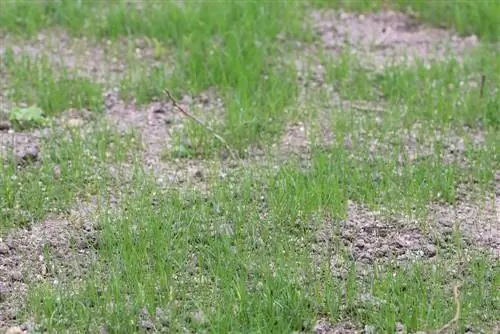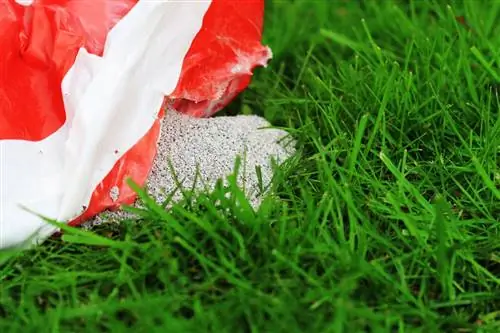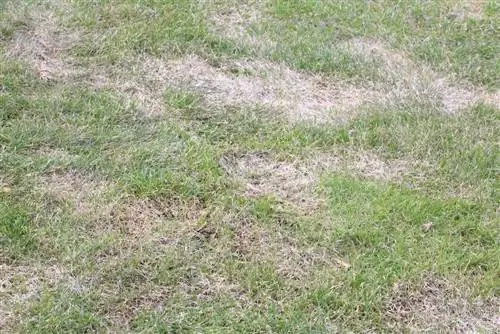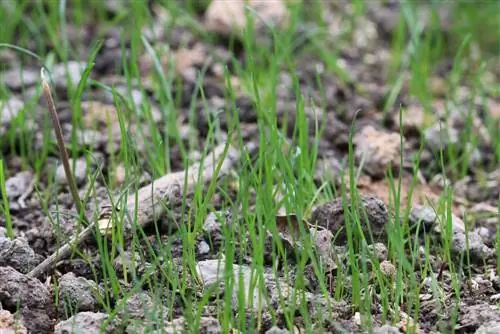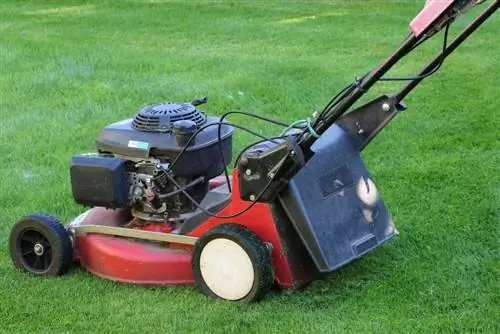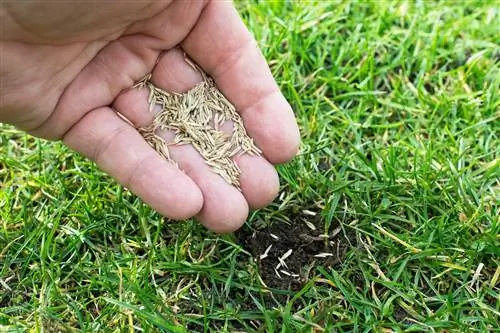- Author admin [email protected].
- Public 2023-12-17 03:39.
- Last modified 2025-01-24 12:45.
Bald spots and gaps in an otherwise well-kept lawn can significantly spoil your enjoyment of the green. It almost goes without saying that you want to take action against it. Fortunately, closing gaps in the lawn is very easy. The magic word here is reseeding. In order for this to really work successfully, it depends on when and of course how.
Causes
If the lawn in your own garden has bare spots, you would do well to first find out why these spots appeared in the first place. After all, it makes little sense to close it and run the risk of the problem reoccurring a short time later. The reasons for such bare areas can be varied. The most common are:
- heavy use of a specific lawn area
- Burns from a grill
- Burns due to over-fertilization
- excessive moss or weed growth
- Infestation with plant pests
- incorrect care measures
Once you have identified the cause of the bald spots, you should of course do everything you can to avoid them in the future. In the event of a pest infestation, it is essential to apply plant protection products from specialist retailers. If there is too much moss or weed growth, you can't avoid removing both - either by tearing or digging out or by using chemical means to combat weeds. Only when the causes have been eliminated can you start reseeding grass seeds.
Time
Typically, lawn or grass seeds are sown in March or September. Then the ideal climatic conditions prevail so that lush growth occurs quickly. Both months are therefore ideal when it comes to reseeding and closing gaps. However, this may mean that you have to wait some time until the existing gap can be closed. Such a measure makes no sense in midsummer, as drought and the hot sun would quickly cause considerable problems for the young plants. The situation is very similar with late autumn or even winter. Threatening night frosts would prevent germination from the outset.
Seeds
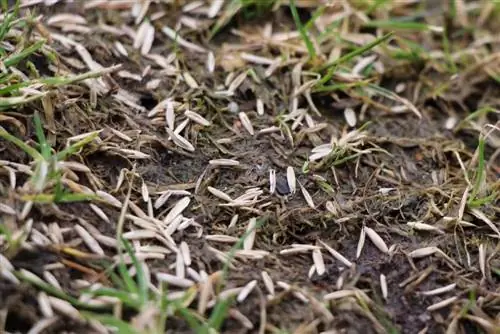
For reseeding orTo close the gap, you can of course use the seeds with which the lawn was originally created. However, it is advisable to buy the variety new and not to use leftovers. It is not at all unlikely that old seeds no longer germinate or only germinate with great difficulty. The better solution is to buy a special reseeding lawn mixture anyway. This is a special breed that germinates extremely quickly and also develops roots very quickly. The advantage is obvious: an existing bald spot can be closed much more quickly and safely.
Reseeding
Anyone who has ever sown a lawn knows of course that the seeds cannot simply be spread on the ground. The soil must first be prepared. This is no different when reseeding. A basic distinction must be made between smaller bare spots and a larger area. Specifically, you proceed as follows when reseeding:
Prepare areas
For smaller gaps in the lawn, it is sufficient to loosen the soil a little with a rake and then water it well. However, if the gaps are larger or even spread over a large area, the effort involved in preparing the floor also increases. Then the area should be excavated to a depth of four to six centimeters and enriched with humus and sand. The soil is then well trampled or rolled. To clarify: A larger area can be assumed if between two and three square meters or more are affected.
Sowing
After the soil has been prepared as described above, it's time to sow the seeds. To do this, simply spread the seed generously over the bald spot by hand. Under no circumstances should you skimp on seeds. You can safely assume that not all seeds germinate.will rise. In this respect it can definitely be a little more. The rule of thumb is to plant between 20 and 30 grams of seeds per square meter of area. It is important to ensure that the distribution is as even as possible.
Tip:
Sowing should only take place in warm, humid, rather cloudy weather. Under no circumstances should it be too hot or too sunny.
Introduce seeds
Once the seeds are distributed over the area, they must be pressed into the soil. The best way to do this is to use a board or several boards that are placed on the surface. Depending on your size, you either stand on the boards with your entire body weight several times or tap them firmly with a hammer. It goes without saying that the boards have to be removed again after the work is done.
Pouring
If the seeds are stuck firmly in the soil, it's time to water them.to the pouring. The method of gentle sprinkling should be chosen so as not to immediately wash the grains out of the ground. Using a lawn sprinkler is ideal. The soil should then be well moist, but not necessarily soaking wet.
Fencing
The newly sown areas in the lawn may no longer be accessed for at least two months. To ensure this, it is advisable to fence off or at least mark these areas. In any case, it must be made clear that no foot has any business here.

